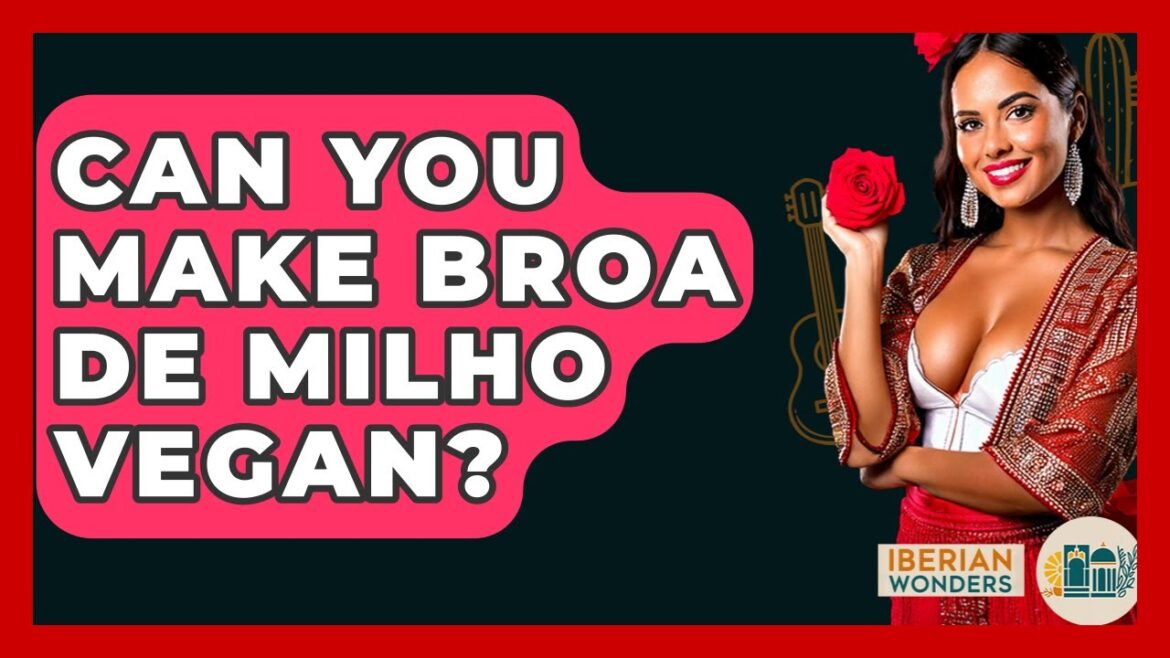Can You Make Broa De Milho Vegan? In this engaging video, we’ll guide you through the process of making Broa de Milho vegan while celebrating its rich Portuguese heritage. This traditional corn bread from the Iberian Peninsula is loved for its delightful taste and texture, making it a perfect addition to any meal. We’ll break down the classic ingredients that form the base of this bread, ensuring you can enjoy it without compromising your vegan lifestyle.
You’ll learn how to create a simple yet satisfying dough using corn flour, wheat or rye flour, warm water, salt, and yeast. We’ll walk you through the steps of mixing, rising, and baking, resulting in a delicious loaf that embodies the essence of traditional Portuguese cooking.
Additionally, we’ll share tips on selecting the right type of corn flour to achieve the best texture and flavor, as well as suggestions for pairing your vegan Broa de Milho with hearty dishes from the Iberian Peninsula. Join us as we celebrate this beloved bread and show you how to enjoy it in a plant-based way. Don’t forget to subscribe for more delicious recipes and culinary adventures!
⬇️ Subscribe to our channel for more valuable insights.
🔗Subscribe: https://www.youtube.com/@IberianWonders/?sub_confirmation=1
#BroaDeMilho #VeganRecipes #CornBread #IberianCuisine #PortugueseFood #PlantBased #VeganBaking #TraditionalRecipes #HealthyEating #VeganCooking #CornFlour #BreadMaking #CulinaryHeritage #EasyVegan #FoodLovers #BakingTips
About Us: Welcome to Iberian Wonders, your ultimate gateway to the rich tapestry of the Iberian Peninsula! Join us as we explore the enchanting cultures, breathtaking landscapes, and hidden gems of Spain and Portugal. Our channel is dedicated to showcasing the diverse heritage, culinary delights, and fascinating stories that define this vibrant region.
can you make broilio vegan have you ever wondered if you can enjoy broa while sticking to a vegan lifestyle this traditional Portuguese corn bread from the Iberian Peninsula offers a delightful taste and texture that many love the good news is that making broa vegan is not only possible but also quite simple the classic recipe for broa typically includes corn flour wheat or rye flour water salt and yeast none of these ingredients come from animals which means the base dough is naturally vegan traditionally yellow corn flour is used for its vibrant color and unique texture this flour is often mixed with wheat or rye flour to give the bread its structure while some modern recipes might add milk or butter for richness these ingredients are not essential for authentic broilio in fact many traditional recipes do not include any animal products at all if you come across a recipe that suggests adding milk or butter feel free to skip these or replace them with plant-based alternatives to whip up your own vegan broa gather these ingredients: corn flour wheat or rye flour warm water salt and yeast start by mixing the flowers with the yeast and salt then add warm water to create a sticky dough allow the dough to rise until it doubles in size which usually takes about an hour once it has risen shape it into a round loaf and bake it until golden brown this method aligns perfectly with traditional Portuguese cooking and results in a dense moist bread with a subtly sweet corn flavor for the best results try to use traditional yellow corn flour known as Finina Dilio 175 this type of flour absorbs liquid differently than finer or white corn flour so you may need to adjust the amount of water you use the bread is often shaped into a round loaf and has a slightly crumbly texture due to the corn flour content broa Millio is incredibly versatile and pairs wonderfully with hearty dishes common in the Iberian Peninsula such as soups stews and cheeses this makes it an excellent vegan option within traditional Portuguese cuisine in summary you can definitely make broa dilio vegan by sticking to the traditional ingredients that do not include dairy or eggs this way you can enjoy a delicious slice of this beloved bread while respecting both its culinary roots and your dietary choices

